
The burn today was just what it needed to open it all up again and restore the natural community to what it should be. The burn went well and because so much of the burn zone had predominately Wiregrass and pine needles, it went quickly. We didn't have to work too hard to get fire to carry through the zone evenly. We did have to drink A LOT of water. Anytime I wasn't doing something else, I was taking a drink of water. We also took turns getting cool in the cab of the firetruck with the air conditioner.
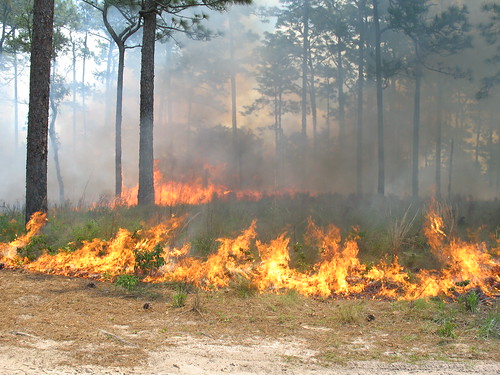
Every once in a while, we would find a shady spot to stand in. Sometimes the wind would blow and give us a little bit of relief.
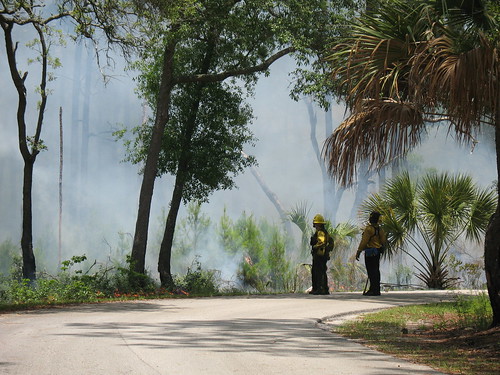
I spent most of the first half of the burn on ignition. I carried a drip torch, the red can pictured below, and applied fire to the edge of the burn zone. I did small segments at a time and then watched until the the section that I had lit moved into the zone a little before I lit a little more.
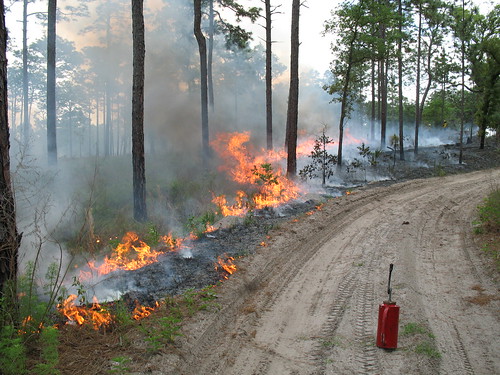
The rest of the time, I was raking around things that we didn't want burned, moving the fire truck along, watching the fire, looking at flowers, and of course, helping to extinguish what we needed to at the end of the burn. I found a lot of beautiful flowers and didn't have time to photograph them all. Here are a few of the beauties that I found. The first was new to me, but still familiar. It looks just like the Spiderwort that I have shown before, but its was smaller and pink instead of blue. It is a relative of the Spiderwort that I am familiar with. The only common name that I found for it was Pink Spiderwort. The photo makes it look more lavender, but that is an illusion. They are a pale pink in person.
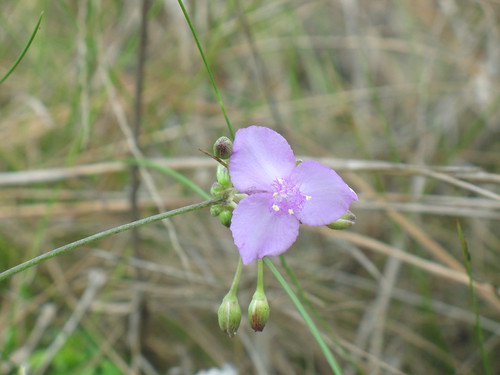
I saw a lot of Prickly Pear Cacti. They were everywhere and many of them were in bloom. They have such big, lush flowers in contrast to their waxy, prickly exterior. The cacti do well in the fire. And are able to survive.
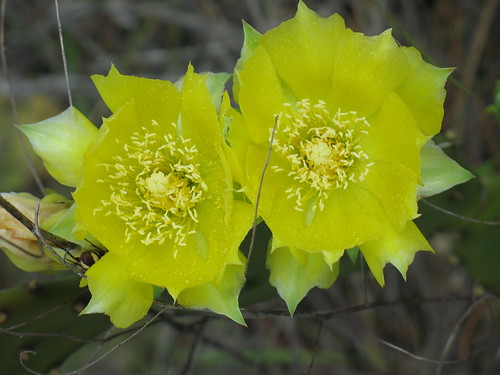
I didn't find a name for this one. It looks so soft and delicate.

When I got home, I was ready for a shower and some dinner. I smelled like sweat, diesel fuel, and smoke and I had worked up quite an appetite. My fiance was kind enough to make dinner for us, but while he was in the kitchen, he made me get up one more time. There were three Fox Squirrels in our backyard that he could see through the window. They were beautiful and romping all over our yard! I was able to sneak out the back door to catch a shot of one who was all black. The other two looked more like the ones I see most often. It is normal for their colors to vary between individuals. This one looked like a tiny black bear! Can we count this as my first bear sighting?
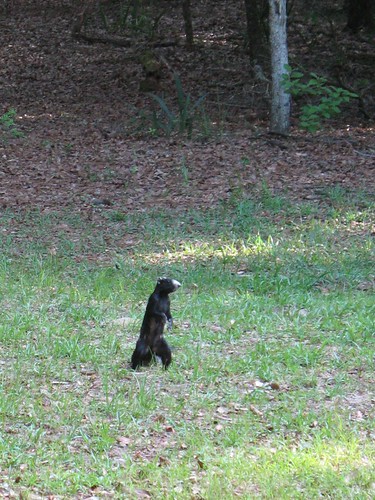
Thought of the Day #48
While I was looking for more information about the Pink Spiderwort, I stumbled upon an amazing tidbit about the original recipe Spiderwort. It is reactive to radiation. The bright blue hairs, or stamen, in the center of the blue Spiderwort will turn pink if the plant is exposed to even low levels of radiation. It can be used as an indicator of dangerous conditions even before some man-made equipment. There are many other natural things that humans have learned to gauge their own safety with. I'm sure you have heard of the canary in the coal mine who is much more sensitive to carbon monoxide and methane gases which could be harmful to miners. There are also insects in streams and waterways that are indicator species. Their presence or absence says a lot about the health of the body of water. I wonder what else nature could tell us if we looked closely.
No comments:
Post a Comment